In the Figure the blocks are of equal mass. The pulley is fixed & massless. In the position shown A is given a speed u and vB= the speed of B. θ < 90°A B will never lose contact with the ground B The downward acceleration of A is equal in magnitude to the horizontal acceleration of B. C vB = ucosθ D vB = u/cosθ
A B will never lose contact with the groundD vB = u/cosθ
Related Solutions
In the figure, the blocks are of equal mass. The pulley is fixed. In the position shown. A moves down with a speed u and the speed of B.
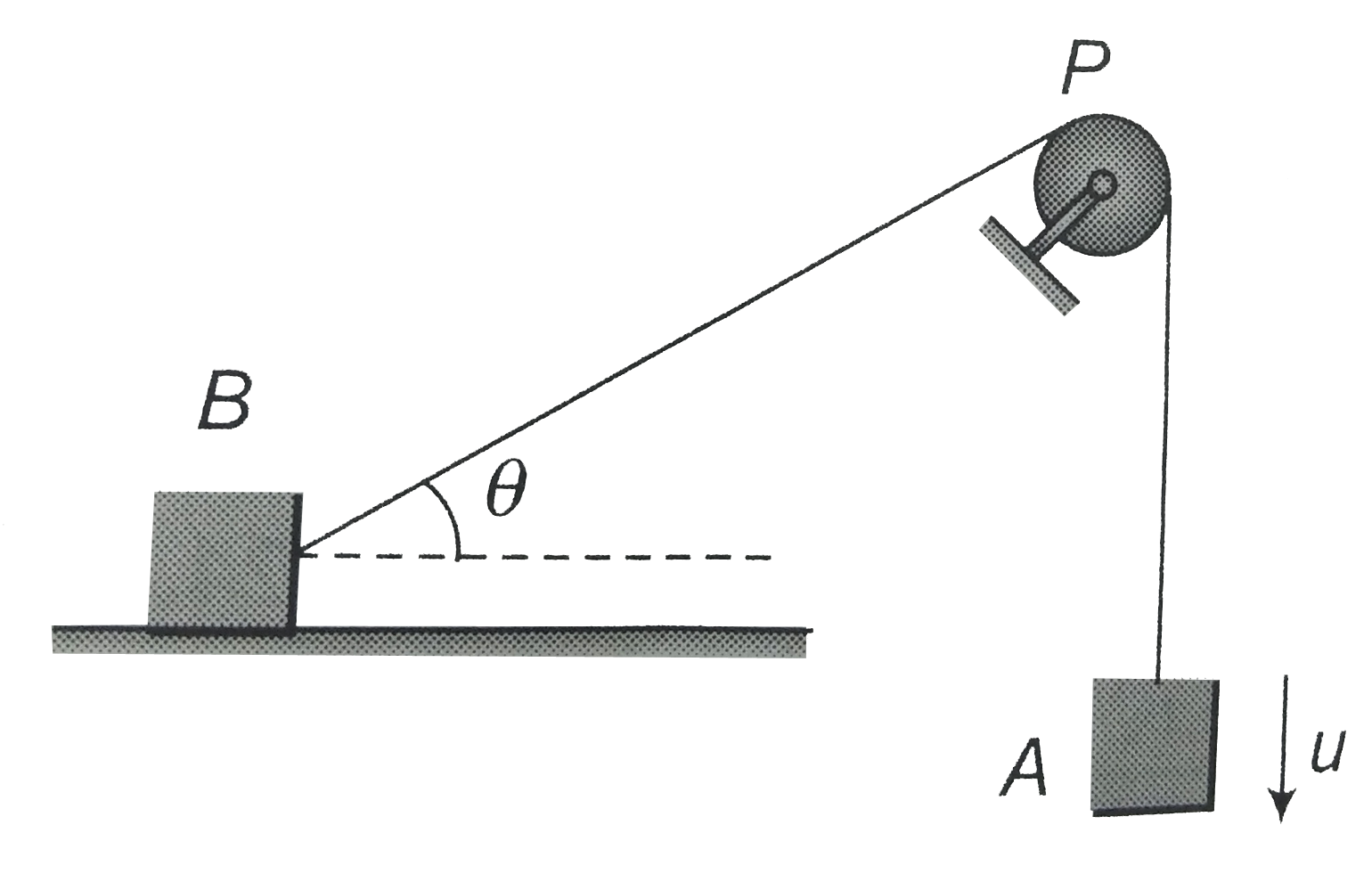
(i) B will never lose contact with the ground.
(ii) The downward acceleration of A is equal in magnitude to the horizontal acceleration of B
(iii) (iv)
View SolutionIn the figure, the blocks are of equal mass. The pulley is fixed. In the position shown, A moves down with a speed u, and v_(B) = the speed of B.
View SolutionThe potential difference (VA – VB) between the points A and B in the given figure is

View SolutionIn the arrangement shown in figure the ends of an in extensible string move downwards with uniform speed u. Pulleys A and B are fixed. Find the speed with which the mass Mmoves upwards.

View SolutionIn the arrangement shown in figure the ends of an in extensible move downwards with uniform speed u. pulleys A and B are fixed. Find the speed with the mass M moves upwards.
View SolutionTwo blocks 'A' and 'B' having masses m_(A) and m_(a) , respectively are connectd by an arrangement shown in the figure. Calculate the downward acceleration of the block B. Assume the pulleys to be massless. Under what condition will block A have downward acceleration?
View SolutionTwo blocks 'A' and 'B' having masses m_(A) and m_(a) , respectively are connectd by an arrangement shown in the figure. Calculate the downward acceleration of the block B. Assume the pulleys to be massless. Under what condition will block A have downward acceleration?
View Solutionमान लीजिए V={a,e,i,o,u} तथा B={a,i,k,u} तो V-B ओर B-V ज्ञात कीजिए|
View SolutionV={a,e,I,o,u} మరియు B={a,I,k,u} అయిన V-B మరియు B-V లను కనుగొనండి.
View Solution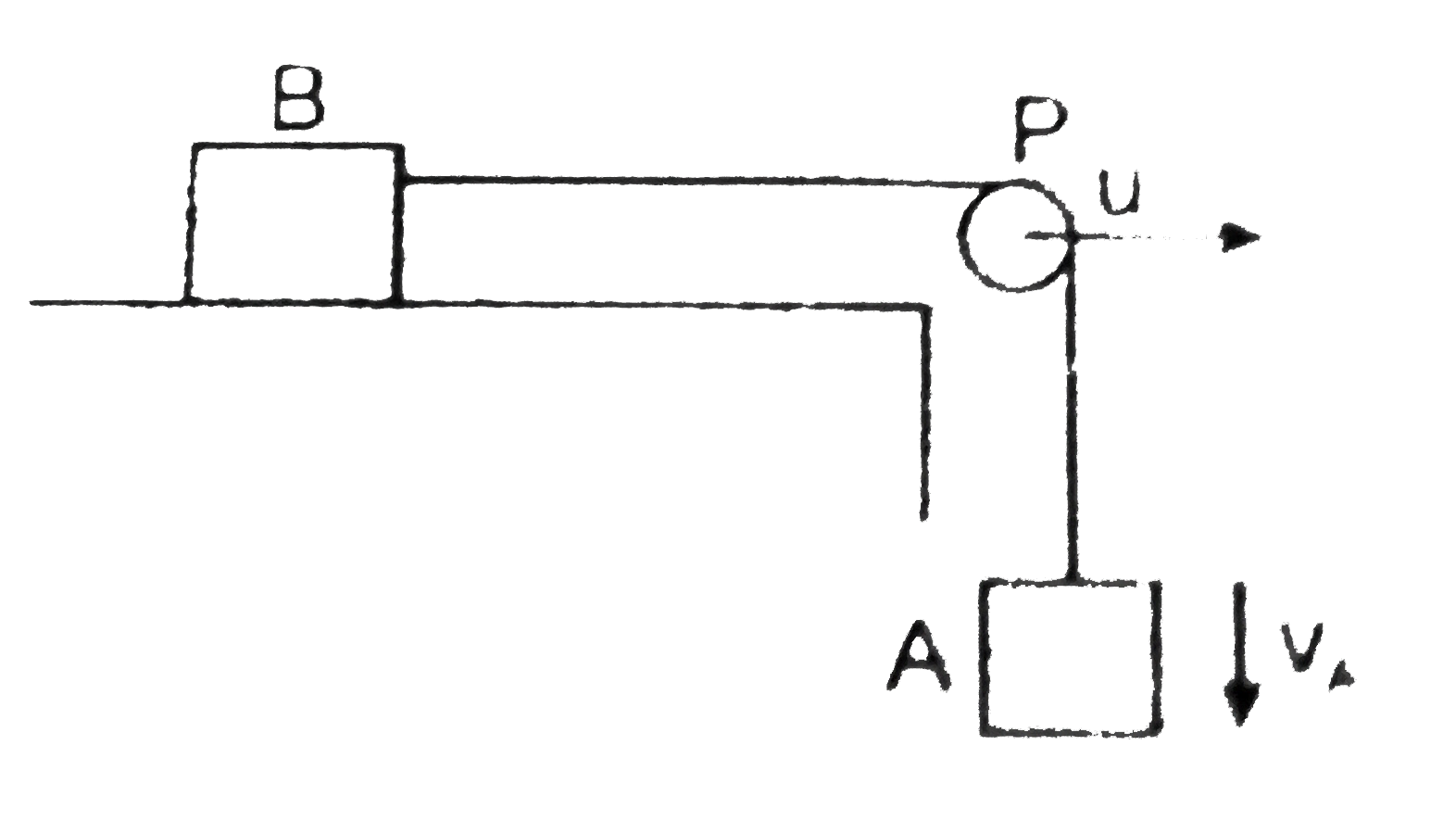
In the figure the pulley moves to the right with a constant speed . The downward speed of A is and the speed of B to the right .
View Solution
In the figure the pulley moves to the right with a constant speed . The downward speed of A is and the speed of B to the right .
View SolutionIn the figure, the pulley P moves to the right with a constant speed u . The downward speed of A is v_(A) , and the speed of B to the right is v_(B) :
View SolutionIn the figure, the pulley P moves to the right with a constant speed u. The downward speed of A is v_(A) , and the speed of B to the right is v_(B) .
View SolutionThe acceleration of the block and respectively in situation shown in the figure is: (pulleys and string are massless).
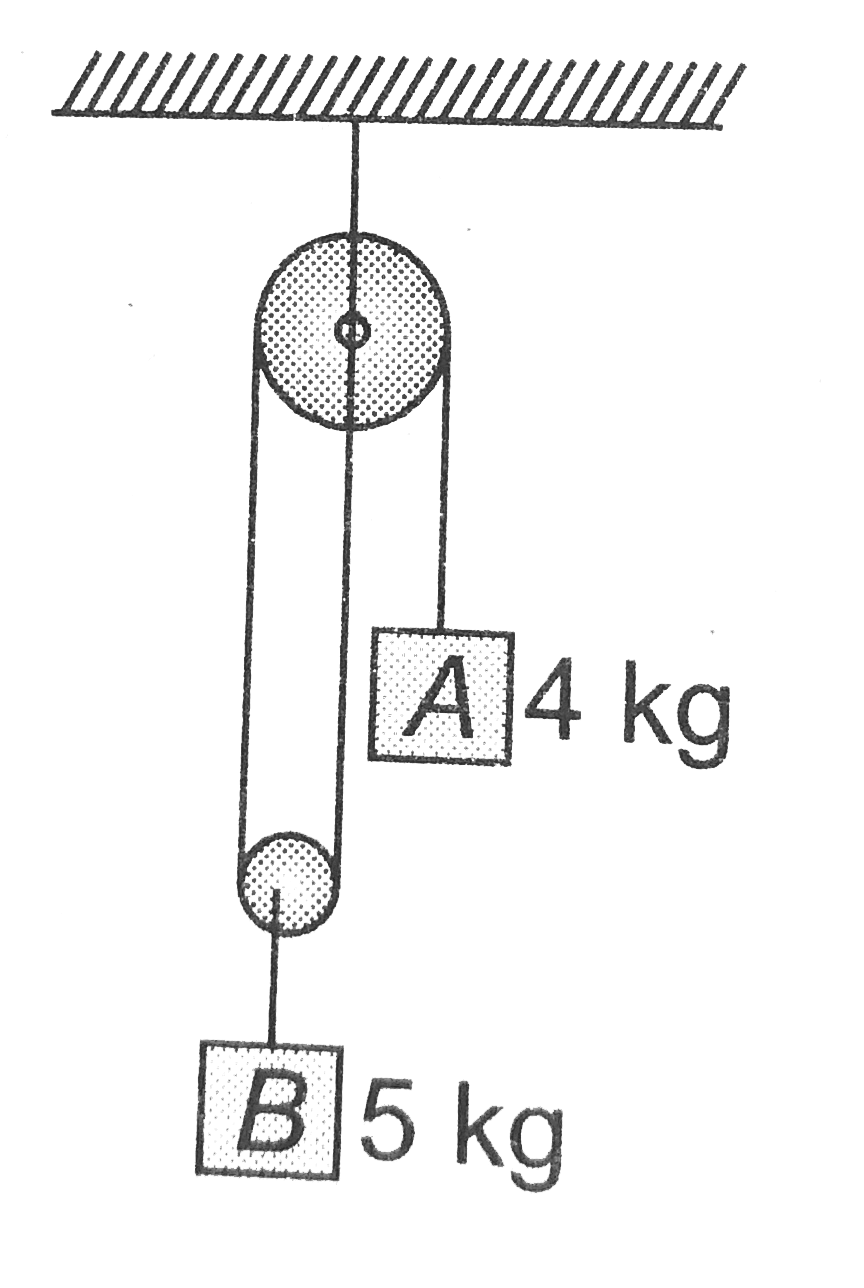
View Solutionघिरनी तथा ब्लॉक का त्वरण चित्र में प्रदर्शित है। सभी घिरनिया तथा डोरिया द्रव्यमानहीन का घर्षणहीन है। तथा का परिमाण होगा।
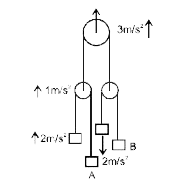
View SolutionAcceleration of pulleys and blocks are as shown in the figure. All pulleys & strings are massless & frictionless magnitude of and are :
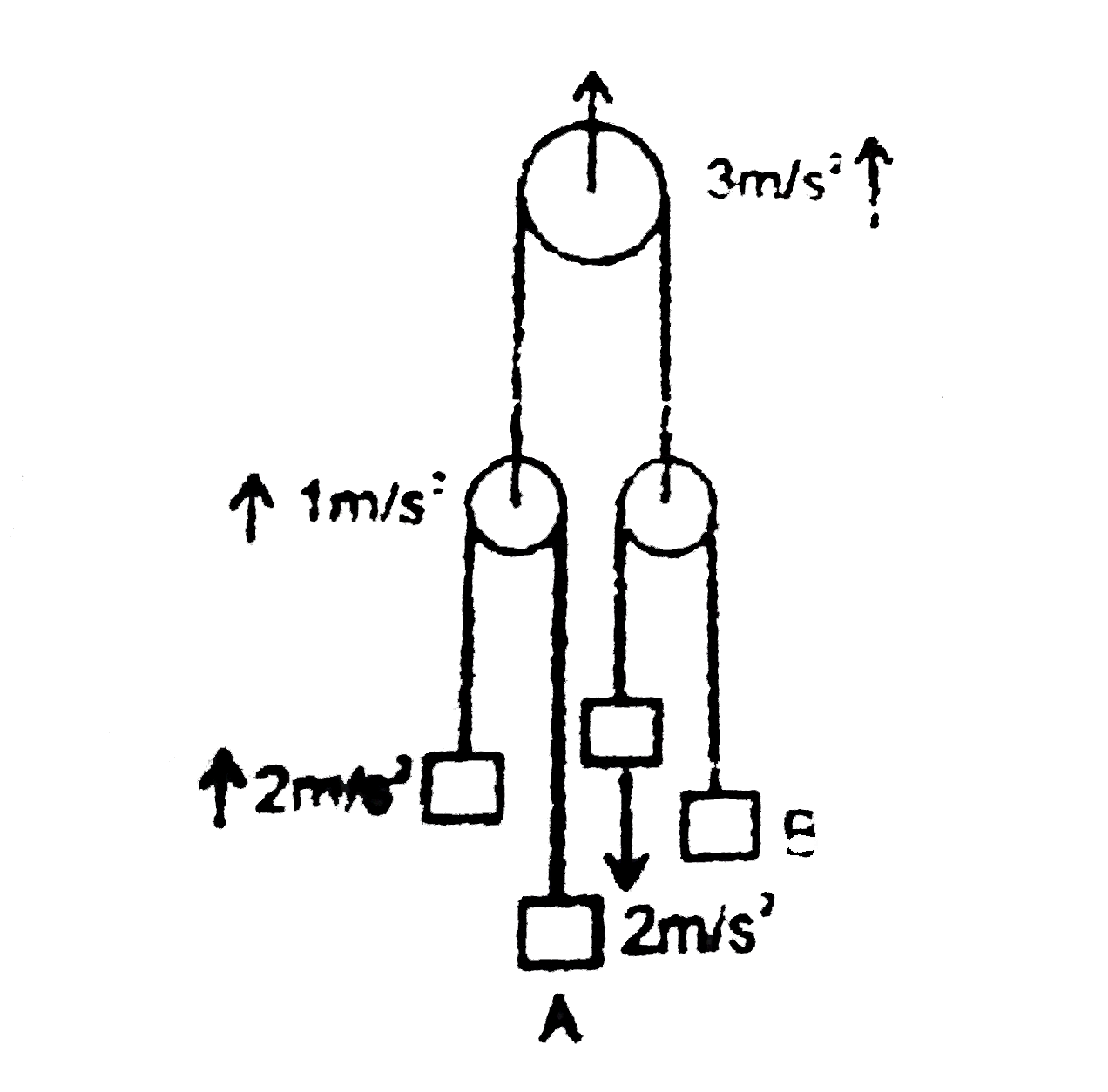 .
.
View SolutionAcceleration of pulleys and blocks are as shown in the figure. All pulleys & strings are massless & frictionless magnitude of a_(A) and a_(B) are : .
View SolutionIn the figure, the pulley P moves to the right with a constant speed u. The downward spee of A is and the speed of B to the right is . Then,
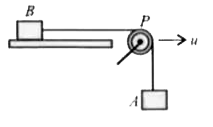
View SolutionIn the arrangement shown, the pulleys and strings are massless. The acceleration of block B is :
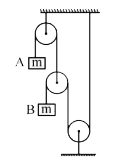
View SolutionIn the arrangement shown, the pulleys and strings are massless. The acceleration of block B is :
View Solution